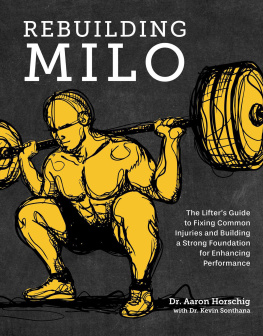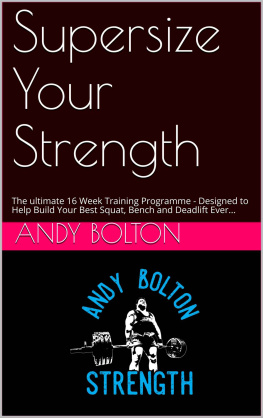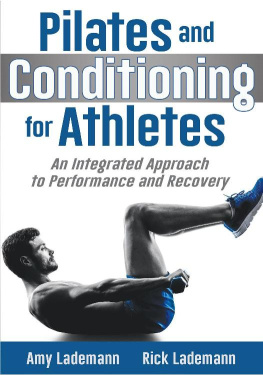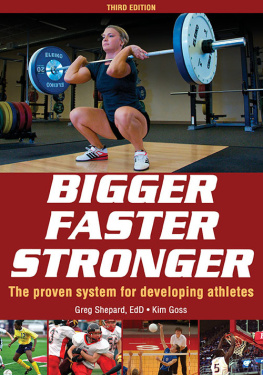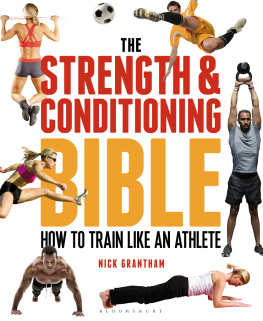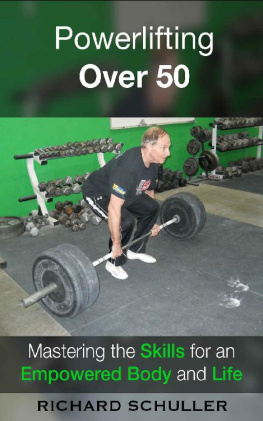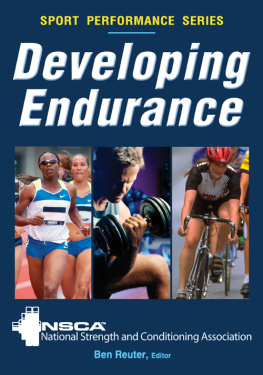The Squat Bible
The Ultimate Guide to Mastering the Squat and Finding Your True Strength
Dr. Aaron Horschig
Founder of Squat University
with
Dr. Kevin Sonthana
and
Travis Neff
Copyright 2016 Dr. Aaron Horschig
All rights reserved.
This book is for educational purposes only. The publisher and the authors are not responsible for any adverse harmful effects arising as a result of the information provided. The exercises described in this book should be used with caution and practiced safely. Always consult with a medical professional before attempting to perform these movements and starting a workout program.
ISBN: 1540395421
ISBN 13: 9781540395429
Library of Congress Control Number: 2016919281
LCCN Imprint Name: Squat University LLC
Contents
4.1 The Tripod Foot
Preface
I often find myself experiencing flashes of dj vu. Ill be talking with athletes who are complaining of pain. Theyll explain how their knees or backs hurt when they move this way or that. By the time theyve come to me, theyve usually exhausted almost every avenue of self-treatment one can find via Google search. Ice baths, pain meds, electrical stimulation; Ive heard it all. Athletes will try anything to keep their athletic performance from faltering.
Well eventually arrive at the crossroads in our conversation where I ask, Okay, let me see what your squat looks like. Typically, at this point the once free-flowing conversation sputters to a direct halt. Im met with a perplexed look as if the athletes are expecting a more scientific medical examination. Eventually the athletes will rise from their chairs, face me, set their feet... and it begins.
When I first started writing this book, I was often met with the question, Why write a book on squatting? Instantly dozens of answers ran through my head. The one answer that came to me is that the squat is the building block to finding your true strength.
The ancient Greek philosopher Socrates once wrote, No man has the right to be an amateur in the matter of physical training. It is a shame for a man to go through life without finding the true strength he is capable of.
When most of us first think about strength, we instantly picture a colossal athlete lifting tremendous weight. I usually envision the bodybuilding monster Ronnie Coleman. He was famous for his weight-training antics that spurred millions of YouTube views. My friends and I would constantly replay videos of Ronnie screaming, Yeah, Buddy! (loudly enough for the whole weight room to hear). He would literally throw hundred-pound dumbbells as if they were plastic toys. There is no denying Ronnie is strong. In many ways, he is the American definition of strength.
Today we live in a performance-driven society. Theres no question about it. Everything from the workplace to the athletic field is judged and graded on how much we can accomplish. How much we can perform.
On ESPN, we are constantly barraged with physical highlights. Who ran the fastest forty-yard dash? Who lifted the latest world-record weight? Who hit the most homeruns?
The way athletes live, train, and compete today echoes our performance-driven society. We base everything on the mantra of becoming bigger, faster, and stronger.
Unfortunately, there is an ugly flip side to this approach. Every single year, thousands of athletes around the world suffer traumatic season-ending injuries. Experts estimate over one hundred thousand young athletes will tear their ACL in the United States alone this year. The scary thing is that the rate of these injuries is only growing.
In our pursuit of physical-performance accolades, we have lost sight of our athletes movement capabilities. We have rearranged our athletic priorities to such an extent that only our performance matters to many. In doing so, we have successfully capsized many athletes potential and brought upon this injury epidemic.
You see, the problem isnt that athletes today are too big, or too strong, or too fast. The issue is that athletes have become so in a way that is not supported by enough quality movement. Therein lays the problem. Too many athletes today are moving poorly.
The foundation from which performance potential is built upon is the same one that also supports and keeps an athlete injury-free. In reality, strength and conditioning professionals and sports-medicine practitioners have a common language. This is the language of movement. Instead of turning to complicated research and pricey technology, we need to take a step back and address the cornerstone of our movement foundation.
Without mastery of the simplest movement patterns, there is no way to reach the peak physical potential Socrates was writing about. Until we change our perspective and become masters of our physical bodies by moving better before we try to move more, we will continue to fall short of our potential. And we will continue to see a rise in injuries. These changes all start with the squat.
In the following pages, you will find a simple way to assess your squatting movement and understand how to fix these problems before injury occurs. After mastering the bodyweight squat, you will then learn how to perfect the exercise of the barbell squat.
When Steve Jobs introduced the world to the Apple I, he did so with the desire to put the power of the personal computer in each individuals hands. By empowering the individual in this technological way, he was able to change the world.
The same empowerment can be found through the teachings in this book. Let me use a real-life example to help solidify this point. Recently I was having a discussion with a young Olympic weightlifter. She was telling me how she had been dealing with knee pain for the past few weeks every time she squatted, cleaned, or snatched the barbell. I asked her what she had been doing to help fix the pain. She replied, Ive iced my knees, stretched my quads, and rested.
She went on that the pain had gotten so bad that she had even had to modify her normal training schedule. Her performance was beginning to suffer, and her coach was not happy to say the least. To make things worse, she had a national-level competition in a few weeks. She was at her wits end.
When she asked if I thought I could help her knees, I smiled and nodded my head. Without hesitation, we started our examination to find out the cause of her pain. Yet again, I found myself in the same situation I seemingly end up in time and time again. Was it dj vu ?
As the conversation sputtered to a halt, I uttered the question, Okay, let me see what your squat looks like. Welcome to The Squat Bible. Lets begin.
Chapter 1
A Movement First, an Exercise Second
1.1 The Looking Glass of Movement
If I had one goal for this book, it would be to inspire you to look at the body in a different manner. I want you to take a step back from conventional wisdom and the ways in which we have viewed and analyzed the body in the past. Its time to take off the blinders and really understand our bodies through a new medium: the looking glass of human movement.

Today we live in a performance-driven culture. Every year Fortune magazine boasts the famous Fortune 500 list, ranking the top five hundred corporations in the United States based solely on their total revenue. Our current paradigm is centered on what we can achieve and accomplish if we just do X, Y, and Z. Its no wonder that the American win-at-all-cost culture has penetrated every aspect of our livesincluding sports.
Next page

